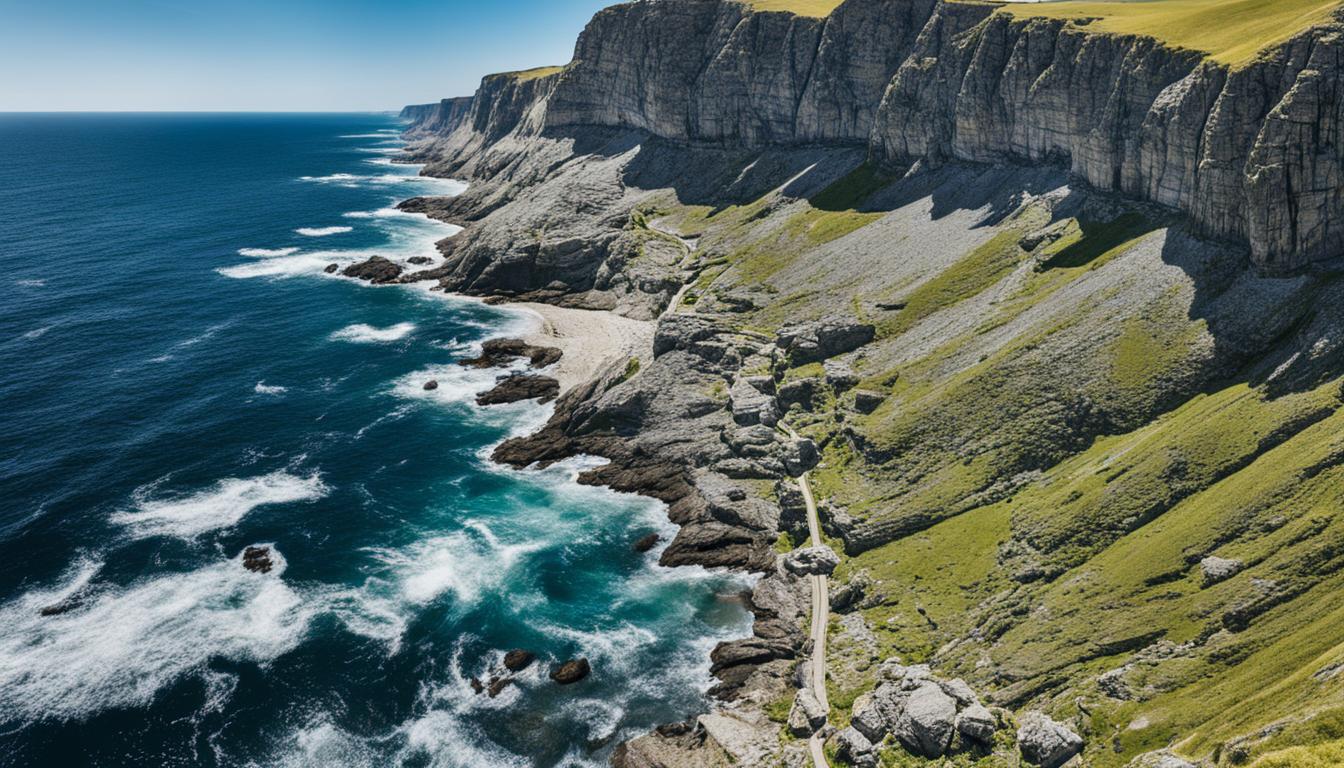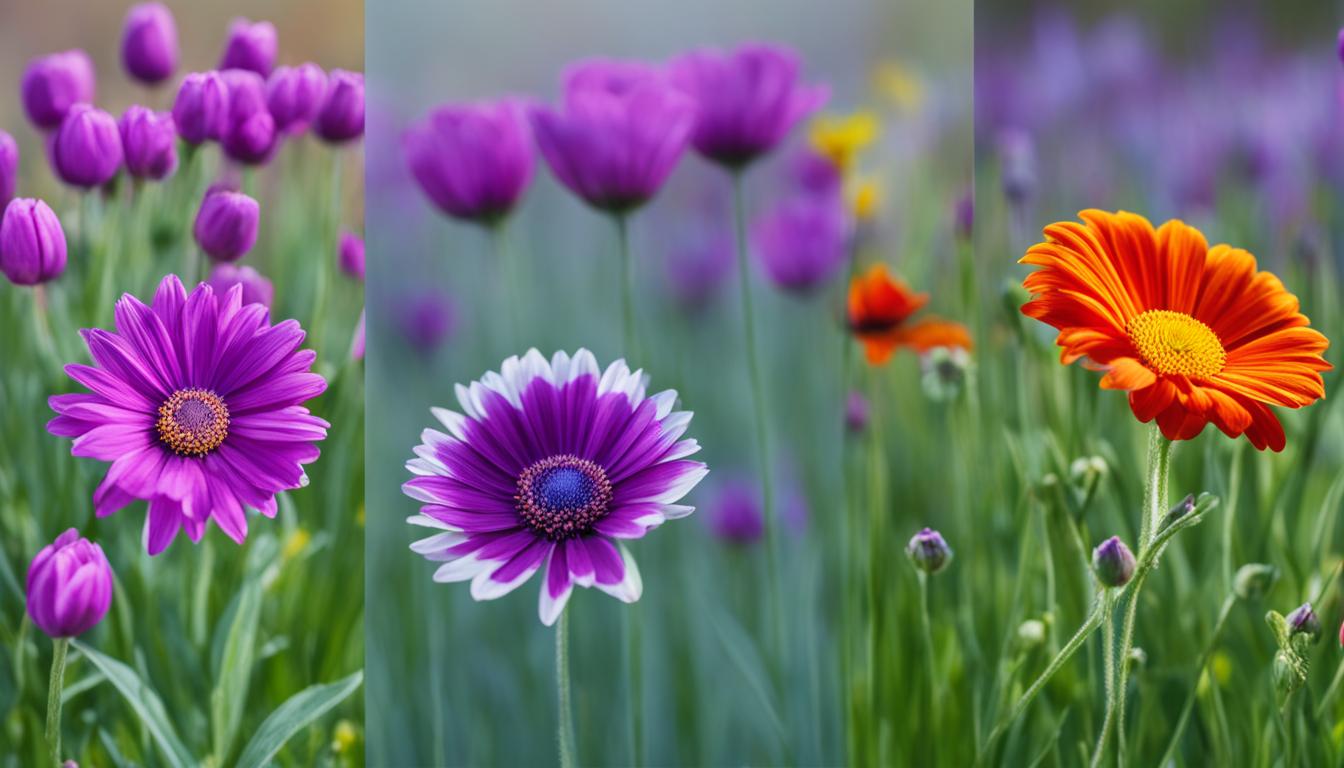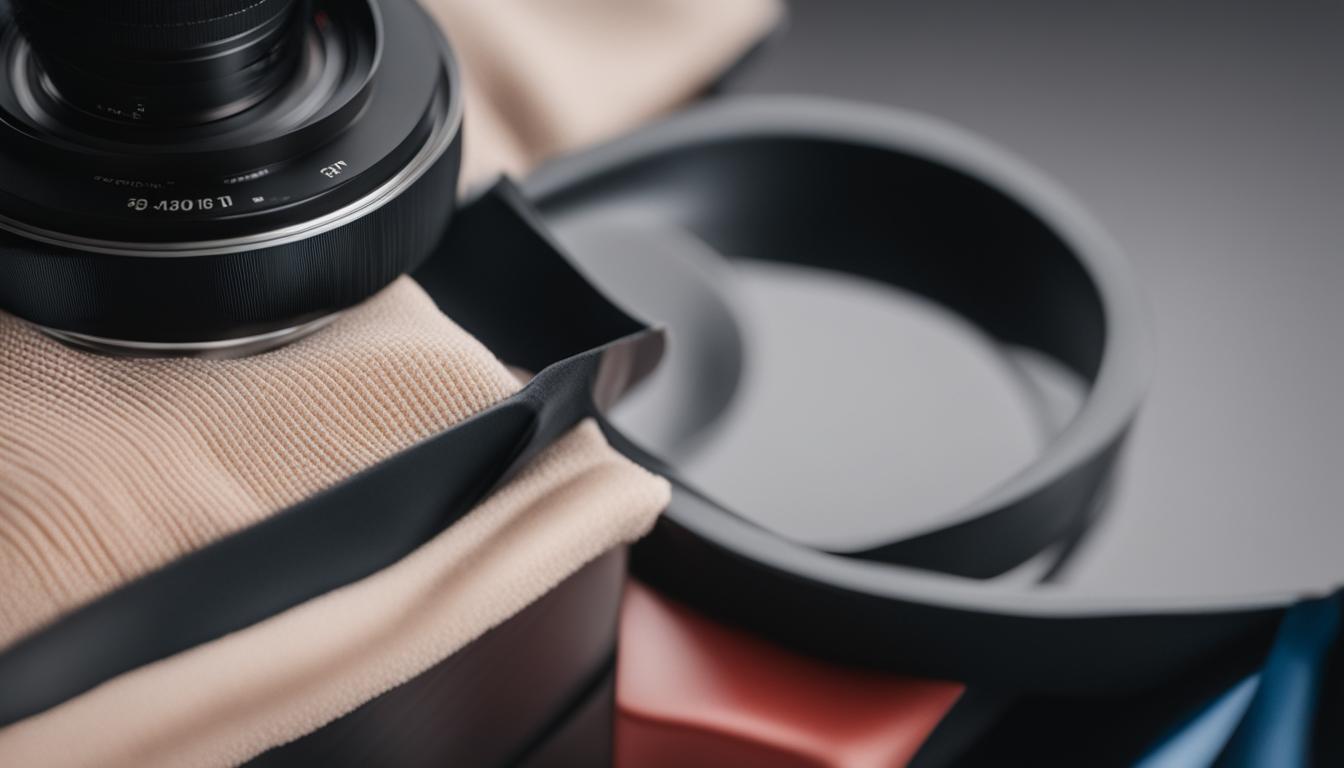Welcome to our comprehensive guide on understanding RAW vs JPEG image formats. As photographers, we know that selecting the right file format can make a significant difference in the final quality and usability of our images. In this article, we will explore the differences between RAW and JPEG image formats, helping you make an informed decision that aligns with your preferences and needs.
Let’s start by understanding the basics. RAW and JPEG are two commonly used file formats for digital photographs. The RAW image format captures uncompressed data directly from the camera sensor, preserving the highest level of detail and color accuracy. On the other hand, the JPEG image format uses lossy compression to reduce file size and is more commonly used for sharing and displaying images.
Key Takeaways:
- RAW files contain more image data and provide greater flexibility for editing.
- JPEG files are smaller in size and more convenient for sharing and printing.
- Converting RAW to JPEG can affect image quality due to compression.
- Many professional photographers prefer shooting in RAW for maximum control over the final result.
- Depending on the camera, RAW files may sometimes appear as JPEGs by default, but the original RAW file is still available.
Is a RAW file bigger than a JPEG file?
When it comes to file size, RAW files are generally larger than JPEG files. RAW files contain a greater amount of image data, capturing every detail and color variation in the photo. This larger file size allows for greater flexibility and control during the editing process.
On the other hand, JPEG files are compressed versions of RAW files, resulting in smaller file sizes. The compression reduces the amount of image data, making it easier to store, share, and transfer files.
To illustrate the difference, let’s compare the average file sizes of RAW and JPEG files:
| File Format | Average File Size |
|---|---|
| RAW | 10 MB – 30 MB |
| JPEG | 2 MB – 6 MB |
As you can see, RAW files can be two to six times larger than JPEG files. This is because RAW files capture more data, such as information about exposure, white balance, and other camera settings, resulting in higher quality images.
In contrast, JPEG files use compression algorithms to reduce file size by discarding some image data. While this compression allows for smaller files, it also introduces a loss in quality. However, the degree of compression can be adjusted, balancing file size and image quality according to specific needs.
Next, we will explore how converting RAW files to JPEG files can impact image quality.
Does converting RAW to JPEG affect quality?
When we convert RAW images to JPEG format, we need to compress the details into a smaller file size. This compression process can have an impact on the quality of the image. Let’s take a closer look.
RAW files contain a significant amount of data that captures the finest details, colors, and tones of a photograph. However, when we convert these files to JPEG, we have to reduce the file size by compressing the information. This compression can result in a loss of image quality.
“Converting RAW to JPEG involves compressing the details into a smaller file size, which can affect image quality.”
The compression applied during the conversion process discards some image data that is considered less important, aiming to create a smaller file size. As a result, the image may lose some of its original sharpness and fine details. The extent of the quality loss depends on the level of compression applied.
It’s important to note that JPEG is a “lossy” image format, meaning that each time we save an image as a JPEG, some image data is permanently discarded. As we save the image multiple times or apply aggressive compression, the loss in quality becomes more noticeable.

When converting RAW to JPEG, it’s important to strike a balance between file size and image quality. Different software and techniques may allow for adjusting the compression level, offering a trade-off between smaller file sizes and higher image quality.
Preserving Image Quality Tips:
- Use the highest quality setting when saving JPEG files to minimize compression.
- Avoid repeatedly saving and re-saving JPEG files to prevent further loss of quality.
- Consider keeping the original RAW files as a backup to retain the highest level of detail and flexibility for future editing.
Overall, while converting RAW to JPEG can affect image quality, it is still possible to achieve good results by employing the appropriate compression techniques and being mindful of the trade-offs between file size and the preservation of fine details.
Should you always shoot in RAW?
When it comes to capturing photographs, there are two main file formats to choose from: RAW and JPEG. Each format has its own advantages and considerations to keep in mind. Let’s explore the benefits of shooting in RAW and JPEG to help you make an informed decision.
Shooting in RAW:
- Captures the highest level of detail
- Allows for easier editing
Shooting in JPEG:
- Smaller file sizes
- Enables shooting more images at once
- Faster file transfer
Many professional photographers prefer shooting in RAW because it captures the full range of details and colors in the image. This format provides the highest level of flexibility during the editing process, allowing for precise adjustments and enhancements. With RAW files, you have greater control over the final result, ensuring that your vision is fully realized.
Quote:
“Shooting in RAW gives me the freedom to fine-tune every aspect of my photographs, from exposure to color grading. It’s like having a digital negative that I can mold into exactly what I want.” – Jane Anderson, professional photographer
However, shooting in JPEG also has its merits. JPEG files are smaller in size, making them convenient for photographers who need to capture a large number of images quickly, such as in continuous shooting mode or during fast-paced events. Additionally, JPEG files can be easily shared and transferred due to their smaller size, making them ideal for immediate use without extensive post-processing.
Quote:
“When I’m shooting multiple images in a short span of time, like during a wedding ceremony, shooting in JPEG allows me to focus on capturing the moment without worrying about file size or post-production editing.” – Michael Roberts, wedding photographer
Ultimately, the choice between shooting in RAW or JPEG depends on your specific needs and preferences as a photographer. Consider factors such as the level of control and flexibility you desire during editing, the importance of capturing the highest level of detail, the available storage space, and the intended use of the photographs.
Table:
| Shooting in RAW | Shooting in JPEG |
|---|---|
| Captures the highest level of detail | Smaller file sizes |
| Allows for easier editing | Enables shooting more images at once |
| Faster file transfer |
Both RAW and JPEG formats have their own strengths and considerations. By understanding the benefits of each, you can make an informed decision that aligns with your photography style, workflow, and goals.
Why do my RAW files show up as JPEG?
Have you ever noticed that sometimes your RAW files show up as JPEG images? Don’t worry, you’re not alone! Depending on your camera settings, shooting in RAW can sometimes result in the files being displayed as JPEG by default.
This can be a bit confusing, especially if you specifically chose the RAW format for its uncompressed image data and superior image quality. But rest assured, the original RAW file is still available and hasn’t been converted permanently.
The reason behind this phenomenon lies in the camera settings. Some cameras have a default preview mode that displays the JPEG version of the image instead of the RAW file. This is often done to provide a quick preview of the image with the camera’s built-in picture style settings applied.
To ensure your RAW files are recognized and displayed as RAW, you can adjust the camera settings. Look for an option in your camera’s menu called “Use RAW as original” or similar. By enabling this option, your camera will display the actual RAW files instead of the processed JPEG versions.
To give you a better understanding, take a look at the table below:
| Camera | Default Display | RAW Recognition Setting |
|---|---|---|
| Nikon D850 | JPEG | “Use RAW as original” – Enabled |
| Canon EOS R5 | JPEG | “RAW Display” – On |
| Sony A7 III | JPEG | “File Format” – RAW |
Remember, even if your camera displays the RAW files as JPEG, you can always access the original RAW files for editing and post-processing.
Now that you know why your RAW files show up as JPEG, you can confidently continue shooting in RAW and harness the full potential of this file format.
Stay tuned for the next section where we’ll delve into the fascinating concept of shooting in both RAW and JPEG simultaneously!
What does RAW + JPEG mean?
In photography, shooting in RAW + JPEG mode allows us to capture and save images in both RAW and JPEG formats simultaneously. This feature gives us the best of both worlds, providing us with immediate access to a ready-to-use JPEG image while preserving the original RAW file for further editing and adjustments.
By shooting in RAW + JPEG mode, we can take advantage of the benefits each format offers. The RAW file captures the highest level of detail and provides us with more flexibility during the editing process. On the other hand, the JPEG file is convenient for quick sharing, printing, or using in various digital platforms.
When shooting in RAW + JPEG mode, the camera saves two copies of each image: the original RAW file and a compressed JPEG version. This allows us to have instant access to the JPEG file for immediate use, while also having the RAW file available for more advanced editing or processing later on.
This mode is especially beneficial in situations where we need to quickly share or review images, and at the same time, have the option to work on the RAW file later for more extensive editing. However, it’s important to note that shooting in RAW + JPEG mode requires more memory space, as it generates two files for each image we capture.

JPEG File Format
When it comes to image file formats, the JPEG format is undoubtedly one of the most widely used and recognized formats in the photography industry. JPEG, short for Joint Photographic Experts Group, is known for its lossy compression that significantly reduces file size while still maintaining relatively good image quality.
The compression rate in JPEG files can vary from 100% quality (no compression) to 1% quality (highest compression). As the compression rate increases, the file size decreases, but the image quality also diminishes. This loss of quality is a result of replacing unseen image details with average color information, which can lead to visible artifacts such as squared and uniformed areas.
Photographers often opt for JPEG format when publishing photographs online due to its small file size, ensuring faster upload and download times. Additionally, JPEG files are widely supported by various software and platforms, making them accessible to a broader audience.
The table below highlights the key features of the JPEG file format:
| Feature | Description |
|---|---|
| Compression Rate | Ranging from 100% quality (no compression) to 1% quality (highest compression) |
| Image Quality | Degrades with higher compression rates, resulting in visible artifacts |
| File Size | Smaller compared to other formats due to lossy compression |
| Usage | Highly used for publishing photographs online |
| Supported | Compatible with various software and platforms |
RAW File Format
When it comes to capturing the highest level of detail and color accuracy, the RAW file format reigns supreme. RAW is a newer file format that stores uncompressed data directly from the camera sensor, resulting in unmatched image quality. This format is highly favored by professional photographers and enthusiasts who want to have full control over their images during post-processing.
Unlike JPEG files, RAW files are significantly larger in size. This is because RAW files retain all the raw image data, including metadata, image thumbnails, and sometimes small preview JPEG files. The larger file size allows for more flexibility in editing and adjusting various elements of the image without compromising quality.
One of the major advantages of the RAW format is the wide range of editing options it provides. Since RAW files contain unprocessed data, photographers have the freedom to make fine adjustments to exposure, colors, white balance, and other settings to achieve the desired result. This level of control is especially beneficial when working on complex images or challenging lighting conditions.
It’s important to note that RAW files can be converted into JPEG files after editing, but the reverse is not possible. Once a JPEG file has been processed and compressed, the original data is lost, making it difficult to make extensive changes and adjustments.
“The RAW file format is our go-to choice for capturing images with unrivaled detail and preserving the truest colors. Its larger file size may require more storage space, but the editing possibilities it offers are worth it.”
With the RAW file format, photographers have the creative freedom to fully unleash their vision and achieve the highest quality images possible. Whether it’s adjusting exposure, fine-tuning colors, or correcting white balance, RAW files provide the necessary flexibility to obtain stunning results.
Conclusion
After weighing the pros and cons, the decision between RAW and JPEG file formats ultimately comes down to the photographer’s specific needs and preferences.
If you prioritize image quality, extensive editing options, and complete control over the final result, shooting in RAW is the way to go. RAW files capture the highest level of detail and provide the flexibility needed for professional post-processing.
On the other hand, if smaller file sizes, convenience for rapid-sequence photography, or direct printing are your main concerns, JPEG format is the more suitable choice. While JPEG files may compromise image quality to some extent, they offer the advantage of smaller file sizes and easier sharing or transferring of images.
When making your decision, consider factors such as the need for post-processing flexibility, desired image quality, available storage space, and the intended use of your photographs. By carefully evaluating these aspects, you can choose the file format that best aligns with your specific photography goals.
FAQ
Is a RAW file bigger than a JPEG file?
Yes, RAW files are generally between two and six times larger than JPEG files because they contain a greater amount of image data.
Does converting RAW to JPEG affect quality?
Yes, converting RAW to JPEG involves compressing the details into a smaller file size, which can affect image quality.
Should you always shoot in RAW?
It depends on your needs and priorities. Many professional photographers shoot in RAW because it captures the highest level of detail and allows for easier editing. However, shooting in JPEG has benefits such as smaller file sizes and faster file transfer.
Why do my RAW files show up as JPEG?
Depending on the camera, shooting in RAW may sometimes cause the files to show up as JPEGs by default. However, the original RAW file should still be available. In the camera settings, choosing the option to “Use RAW as original” can ensure it is recognized as a RAW file.
What does RAW + JPEG mean?
RAW + JPEG mode allows for shooting and saving images in both RAW and JPEG formats simultaneously. This saves two copies of the image, the original RAW file and a JPEG file, providing the option to immediately use a JPEG image while preserving the RAW file for further editing.
What is the JPEG file format?
JPEG is an image file format with lossy compression that reduces file size by replacing unseen image details with average color information. The compression level can range from 100% quality (no compression) to 1% quality (highest compression). Higher compression rates result in lower image quality.
What is the RAW file format?
RAW is a newer file format that captures uncompressed data from the camera sensor, providing the highest level of detail and color accuracy. RAW files are larger than JPEG files and store metadata, image thumbnails, and sometimes small JPEG files for preview. RAW format offers more editing options and the ability to easily make fine adjustments to achieve the desired result.
Which file format should I choose, RAW or JPEG?
Choosing between RAW and JPEG file formats depends on the purpose and priorities of the photographer. RAW format offers higher image quality, more editing options, and control over the final result but requires more storage space. JPEG format has smaller file sizes, is convenient for rapid-sequence photography and direct printing, but compromises image quality. Factors to consider include the need for post-processing flexibility, desired image quality, available storage space, and intended use of the photographs.
Which Photo File Type is Best for Flash Photography: RAW or JPEG?
When choosing the best photo file type for flash photography, it’s important to consider the pros and cons of RAW and JPEG files. RAW files offer greater flexibility in post-processing, while JPEG files are more convenient for sharing and printing. The right choice depends on your specific needs. For more detailed information, refer to a flash photography comparison guide.




